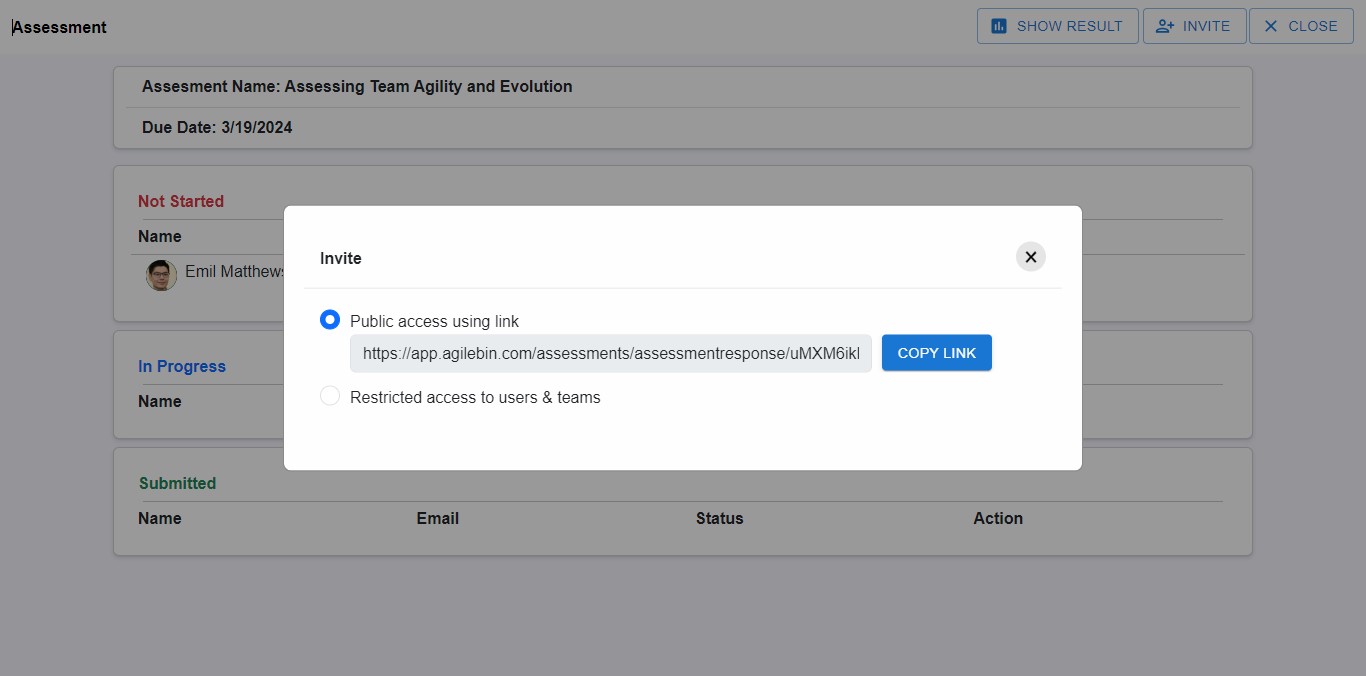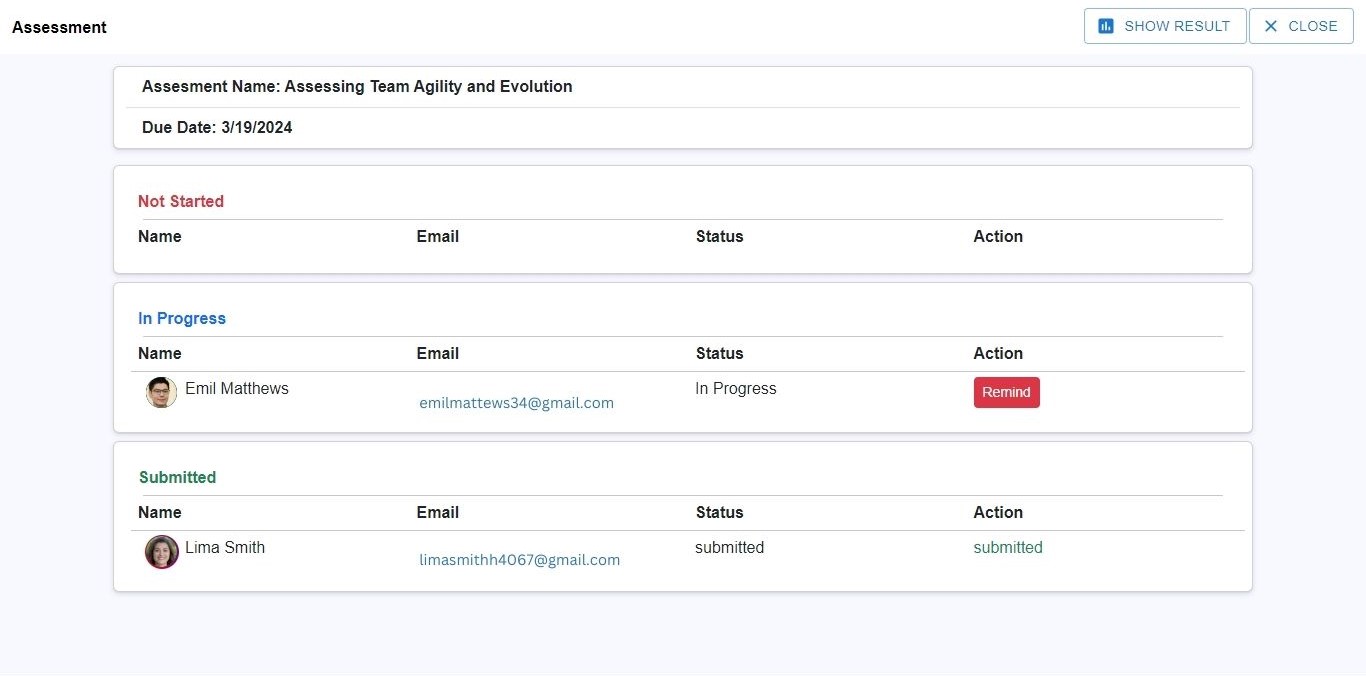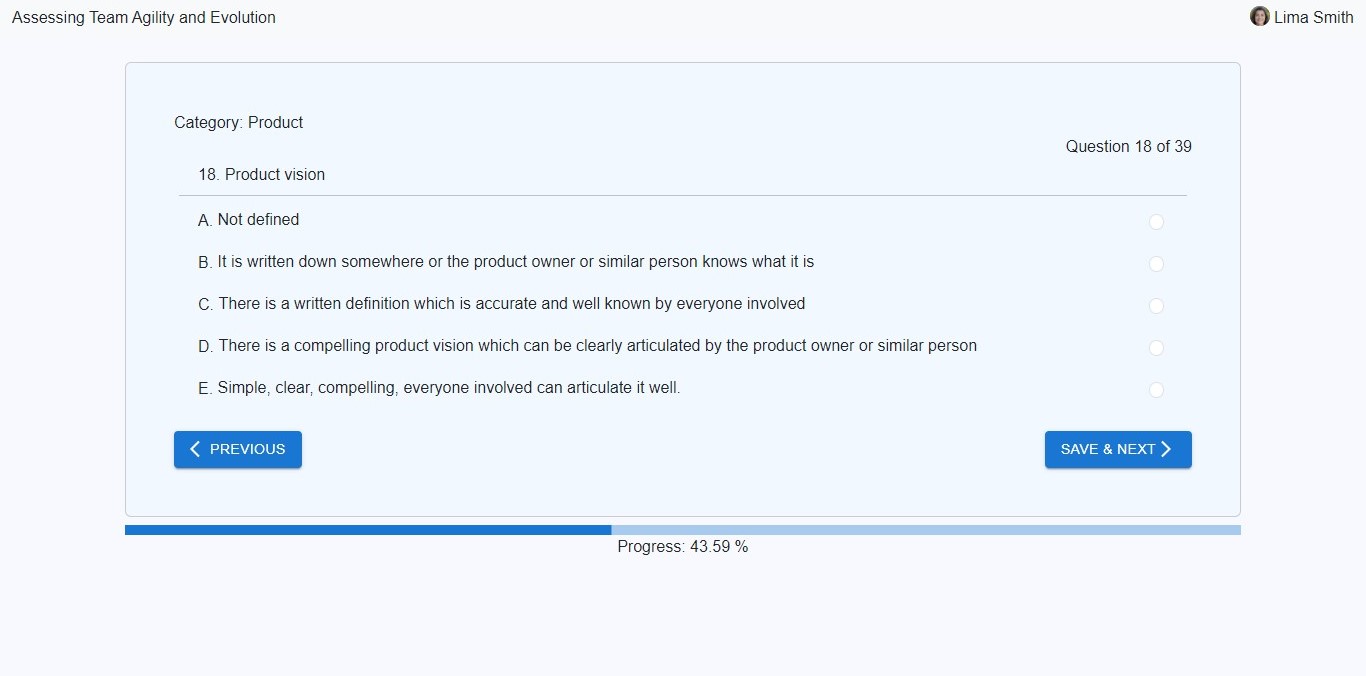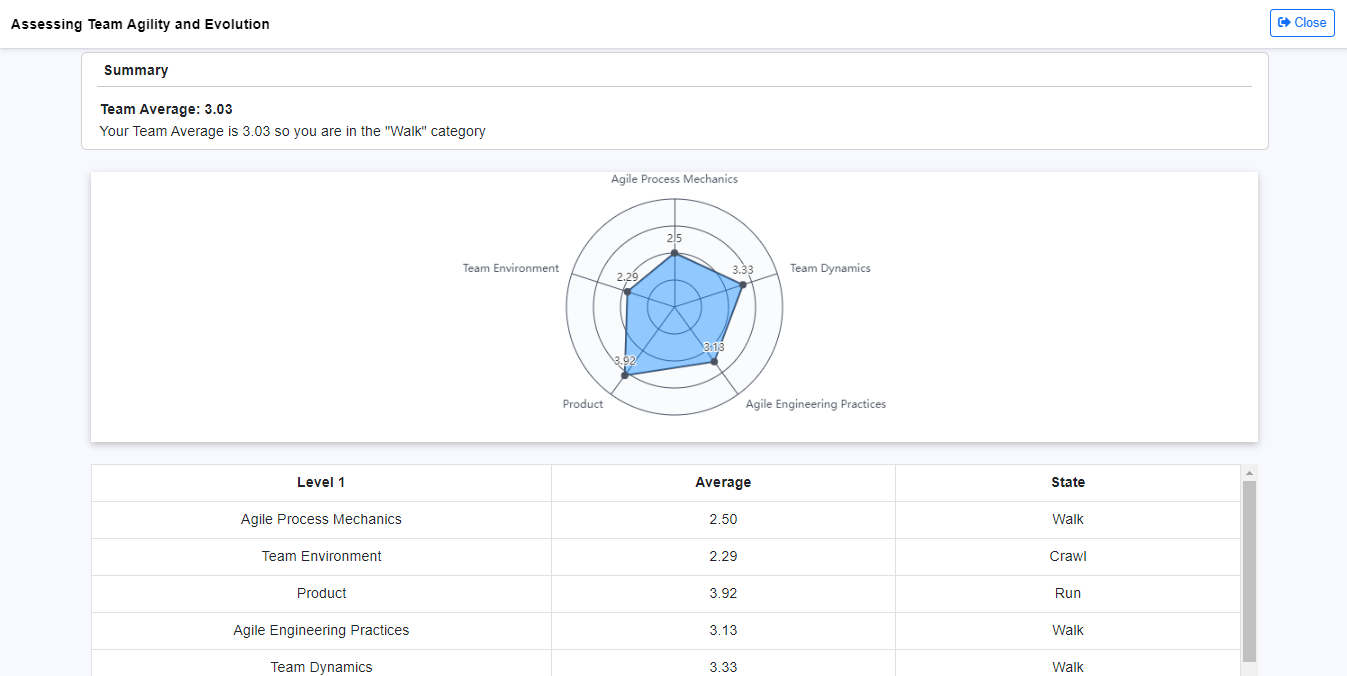Agile Maturity Assessment
Agile Maturity Assessment gauges an organization's readiness and effectiveness in adopting Agile practices.

What is Agile Maturity Assessment and why is it essential for organizations?
Agile Maturity Assessment is a critical evaluation process that measures an organization's readiness and effectiveness in adopting Agile methodologies, encompassing aspects such as team collaboration, communication, leadership support, and adherence to Agile principles. It is indispensable for organizations as it enables them to pinpoint strengths and weaknesses in their Agile practices, driving targeted efforts for improvement. By identifying inefficiencies, enhancing collaboration, and aligning with customer needs, the assessment empowers organizations to optimize project management practices, deliver value more efficiently, and drive continuous improvement. Ultimately, Agile Maturity Assessment serves as a roadmap for organizations to enhance their Agile maturity level, enabling them to thrive in today's competitive business landscape.
What are the primary objectives and benefits of conducting Agile Maturity Assessments?
The primary objectives and benefits of conducting Agile Maturity Assessments include:
- Objective Evaluation:Agile Maturity Assessments provide a structured and impartial evaluation of an organization's Agile practices, allowing for an unbiased assessment of current capabilities and areas for development.
- Enhanced Agility:By identifying gaps and inefficiencies in Agile processes, organizations can adapt and improve their practices to become more responsive to change, ultimately enhancing their ability to deliver value to customers in dynamic market conditions.
- Continuous Improvement:Agile Maturity Assessments serve as a catalyst for continuous improvement by offering actionable insights and recommendations. They enable organizations to iterate on their Agile practices, fostering a culture of learning and adaptation.
- Optimized Resource Allocation:Through targeted improvements identified in the assessment, organizations can allocate resources more effectively, ensuring that investments in Agile transformation yield maximum returns and align with strategic priorities.
- Improved Team Collaboration:Assessments highlight opportunities to enhance collaboration and communication among Agile teams, fostering a culture of shared responsibility and collaboration, leading to higher-quality outcomes and increased team morale.
- Risk Mitigation:By identifying potential risks and challenges early on, Agile Maturity Assessments enable organizations to proactively address issues and minimize the impact on project delivery, enhancing overall risk management capabilities.
- Alignment with Business Goals:Assessments ensure that Agile practices are closely aligned with the organization's broader business objectives, ensuring that Agile initiatives drive tangible business value and support long-term strategic goals.
- Increased Productivity:By streamlining Agile processes and removing bottlenecks identified during the assessment, organizations can boost productivity and accelerate time-to-market, leading to faster delivery of products and services.
- Better Stakeholder Engagement:Agile Maturity Assessments help organizations meet stakeholder expectations by delivering projects more predictably, adapting to changing requirements, and maintaining a focus on delivering value throughout the development lifecycle.
- Competitive Advantage:By continuously assessing and improving Agile maturity, organizations can differentiate themselves in the market by delivering innovative solutions more efficiently, staying ahead of competitors, and meeting evolving customer needs with speed and agility.
What is Agile Maturity Assessment and why is it essential for organizations?
- Objective Evaluation:Agile Maturity Assessments provide a structured and impartial evaluation of an organization's Agile practices, allowing for an unbiased assessment of current capabilities and areas for development.
- Enhanced Agility:By identifying gaps and inefficiencies in Agile processes, organizations can adapt and improve their practices to become more responsive to change, ultimately enhancing their ability to deliver value to customers in dynamic market conditions.
- Continuous Improvement:Agile Maturity Assessments serve as a catalyst for continuous improvement by offering actionable insights and recommendations. They enable organizations to iterate on their Agile practices, fostering a culture of learning and adaptation.
- Optimized Resource Allocation:Through targeted improvements identified in the assessment, organizations can allocate resources more effectively, ensuring that investments in Agile transformation yield maximum returns and align with strategic priorities.
- Improved Team Collaboration:Assessments highlight opportunities to enhance collaboration and communication among Agile teams, fostering a culture of shared responsibility and collaboration, leading to higher-quality outcomes and increased team morale.
- Risk Mitigation:By identifying potential risks and challenges early on, Agile Maturity Assessments enable organizations to proactively address issues and minimize the impact on project delivery, enhancing overall risk management capabilities.
- Alignment with Business Goals:Assessments ensure that Agile practices are closely aligned with the organization's broader business objectives, ensuring that Agile initiatives drive tangible business value and support long-term strategic goals.
- Increased Productivity:By streamlining Agile processes and removing bottlenecks identified during the assessment, organizations can boost productivity and accelerate time-to-market, leading to faster delivery of products and services.
- Better Stakeholder Engagement:Agile Maturity Assessments help organizations meet stakeholder expectations by delivering projects more predictably, adapting to changing requirements, and maintaining a focus on delivering value throughout the development lifecycle.
- Competitive Advantage:By continuously assessing and improving Agile maturity, organizations can differentiate themselves in the market by delivering innovative solutions more efficiently, staying ahead of competitors, and meeting evolving customer needs with speed and agility.
How can you conduct an Agile Maturity Assessment with Agilebin?
Easily evaluate how well your team is doing with Agile using Agilebin's simple assessment template!
Why choose Agilebin's Agile Maturity Assessment template? Because it delivers a practical and immersive experience, ensuring your assessment feels authentic and impactful. With Agilebin's user-friendly template, you'll seamlessly navigate through the assessment process, leading to a more productive and insightful evaluation of your Agile maturity. Plus, receive detailed results and actionable recommendations to drive continuous improvement and enhance your Agile practices.
Select the Agile Maturity Assessment template in Agilebin
Select Agilebin's Agile Maturity Assessment template to guide your team through the evaluation process, offering a structured framework for insightful reflection and improvement conversations.
Invite team members to participate in providing their input for the Agile Maturity Assessment
Encourage your team members to join in and share their thoughts for the Agile Maturity Assessment. Their input helps us understand how well we're doing with Agile and what areas we can improve on.

Monitor your team's assessment progress: Not Started, In Progress, Submitted
Effortlessly track your team's assessment journey with clear visibility into who has yet to start, who is currently in progress, and who has already submitted their contributions. This streamlined monitoring system ensures effective management of the assessment process, allowing for timely follow-ups and targeted support where needed to keep the assessment on track.

Let your team complete the assessment process
Give your team the freedom and time to go through the assessment process at their own pace. This allows each member to contribute thoughtfully and ensures a thorough evaluation of your Agile practices. It also fosters a sense of ownership and accountability among team members, leading to more meaningful insights and opportunities for improvement.

Check the assessment results to see how well your Agile practices are working
Take a look at the assessment results to understand how effective your Agile practices are in achieving your goals. This helps you identify areas for improvement and make informed decisions about your approach, whether your team is in the walk, crawl, or run category.
